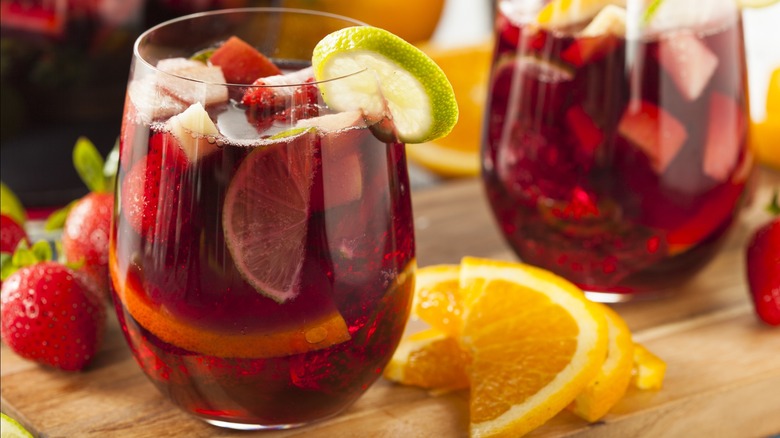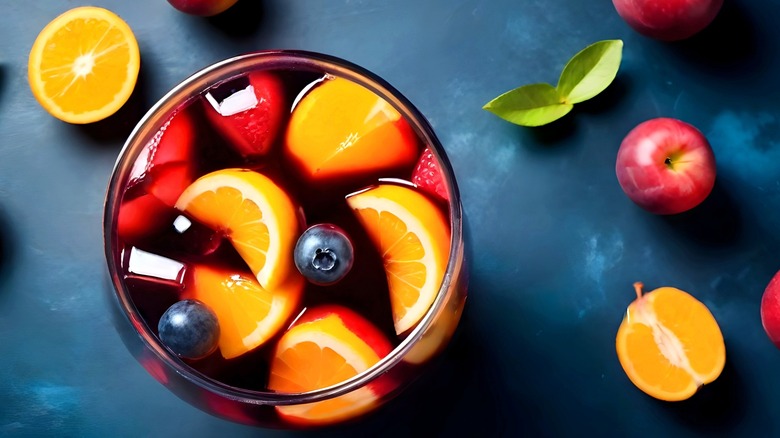How To Choose The Best Fruit To Use In Your Sangria
Sangria wasn't actually introduced to the U.S. until 1964, when it was served in the Spanish Pavilion at the World's Fair in New York City. Fruit-filled red sangria then took off, and has since become one of the most popular summertime drinks. Sangria's origins are a bit murky, but it does seem that the Spaniards have been macerating fruit in red wine for hundreds of years, initially as a means of preserving excess fruit from an abundant crop. In Spain, red sangria (derived from "sangre," the Spanish word for blood) is usually drunk with traditional Spanish tapas dishes or other appetizers, because the taste of the fruit could clash with the complex flavors of the main meal. Some claim that an authentic sangria must have fresh peach and perhaps fresh pineapple, but others recommend apples, oranges, and lemons.
Cocktail connoisseur Camille Goldstein of Muddling Memories and her husband Cody create bespoke cocktails for high-end events in New York, so we asked for her opinion about what the best fruits for sangria are. "You want fruits that will act as sponges and absorb the flavors of the sangria as well as add a little natural sweetness," Goldstein advised. The choice of fruits is up to you, but for both red and white sangria (like this floral white wine sangria), she recommends using apples, lemons, limes, oranges, pears, grapefruit, peaches, nectarines, pineapple, kiwi, and berries such as raspberries, strawberries, and blackberries. She also suggests cutting the fruits in large slices and wheels so you won't wind up with "a small chunky fruit salad at the bottom of your glass."
The fruits that can make or break your sangria
According to Camille Goldstein, certain soft fruits — like bananas, guava, dragon fruit, and papaya — won't work as well in sangria because they will "disintegrate in the sangria, causing a mess in the bottom of the pitcher." She further advises that if you want these particular fruits in your sangria, then you should look for a red or white wine that has those flavor notes in the bottle. In Spain, pear is also avoided because it can water down the sangria. Whichever fruit or fruits you decide upon, make sure that they are fresh and ripe. Unripe fruit can make for a bitter and unpleasant drink, and there won't be enough natural juice to blend with the wine.
Another component for making a sangria taste authentic is macerating the fruit for the right amount of time. To create the special alchemy that happens between the fruit and the wine, the fruit needs to soak for at least two hours before drinking the sangria. Even better, if you're not serving the sangria until later in the day, soak the fruit for two hours at room temperature and then chill it for two more hours in the refrigerator. This ahead-of-time preparation allows the full flavors to develop, and also, since the sangria will be pre-chilled, you won't need to add ice cubes to each glass. By following Goldstein's recommendations for the best fruits to use, your next sangria will be a surefire hit.

